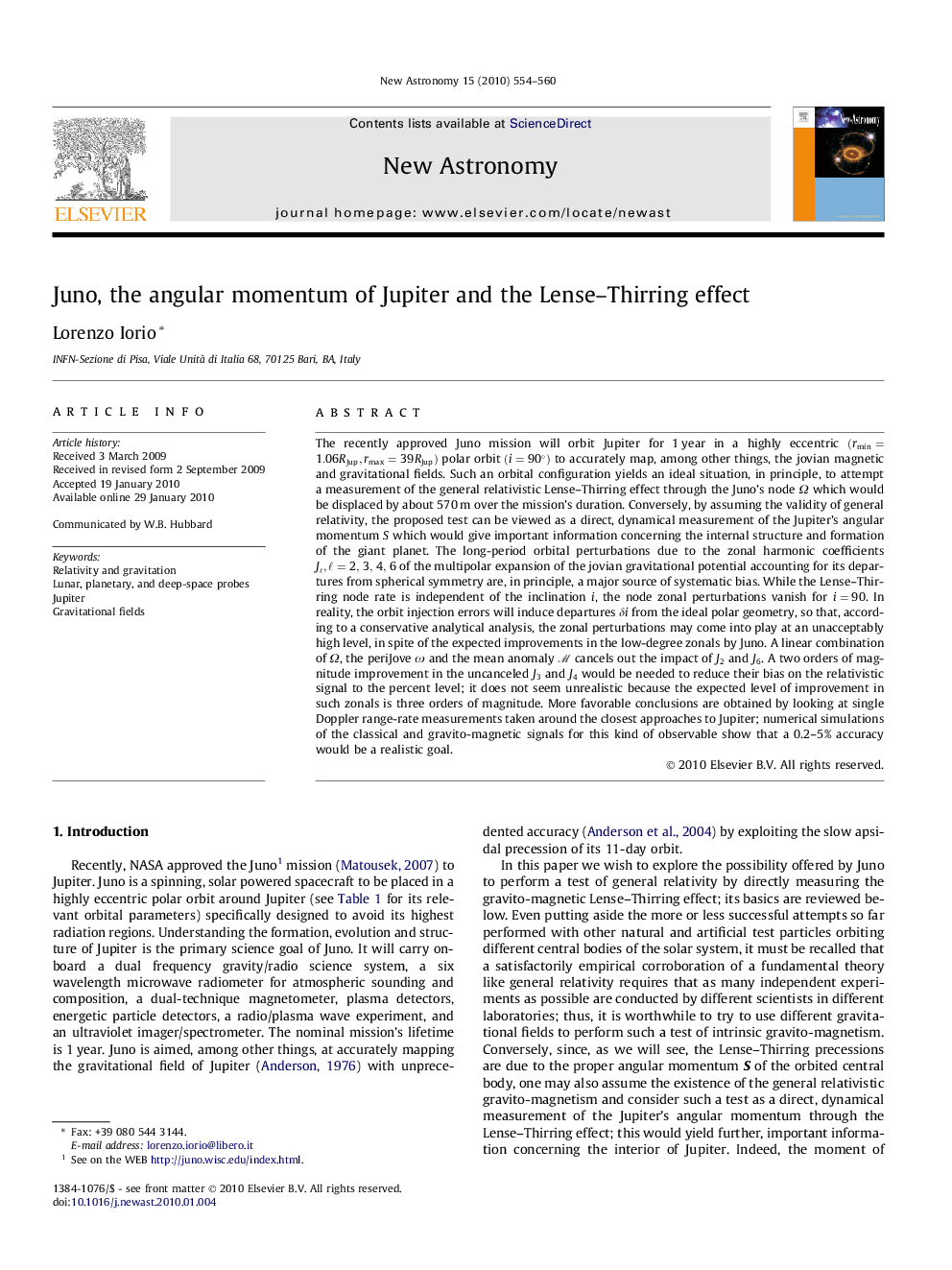| کد مقاله | کد نشریه | سال انتشار | مقاله انگلیسی | نسخه تمام متن |
|---|---|---|---|---|
| 1779511 | 1022004 | 2010 | 7 صفحه PDF | دانلود رایگان |

The recently approved Juno mission will orbit Jupiter for 1 year in a highly eccentric (rmin=1.06RJup,rmax=39RJup)(rmin=1.06RJup,rmax=39RJup) polar orbit (i=90°)(i=90°) to accurately map, among other things, the jovian magnetic and gravitational fields. Such an orbital configuration yields an ideal situation, in principle, to attempt a measurement of the general relativistic Lense–Thirring effect through the Juno’s node Ω which would be displaced by about 570 m over the mission’s duration. Conversely, by assuming the validity of general relativity, the proposed test can be viewed as a direct, dynamical measurement of the Jupiter’s angular momentum S which would give important information concerning the internal structure and formation of the giant planet. The long-period orbital perturbations due to the zonal harmonic coefficients Jℓ,ℓ=2,3,4,6 of the multipolar expansion of the jovian gravitational potential accounting for its departures from spherical symmetry are, in principle, a major source of systematic bias. While the Lense–Thirring node rate is independent of the inclination i , the node zonal perturbations vanish for i=90i=90. In reality, the orbit injection errors will induce departures δiδi from the ideal polar geometry, so that, according to a conservative analytical analysis, the zonal perturbations may come into play at an unacceptably high level, in spite of the expected improvements in the low-degree zonals by Juno. A linear combination of Ω, the periJove ω and the mean anomaly MM cancels out the impact of J2J2 and J6J6. A two orders of magnitude improvement in the uncanceled J3J3 and J4J4 would be needed to reduce their bias on the relativistic signal to the percent level; it does not seem unrealistic because the expected level of improvement in such zonals is three orders of magnitude. More favorable conclusions are obtained by looking at single Doppler range-rate measurements taken around the closest approaches to Jupiter; numerical simulations of the classical and gravito-magnetic signals for this kind of observable show that a 0.2–5% accuracy would be a realistic goal.
Journal: New Astronomy - Volume 15, Issue 6, August 2010, Pages 554–560